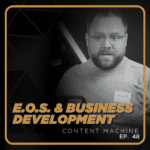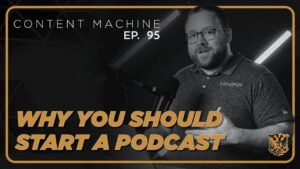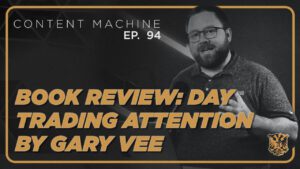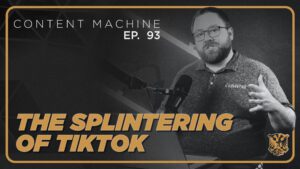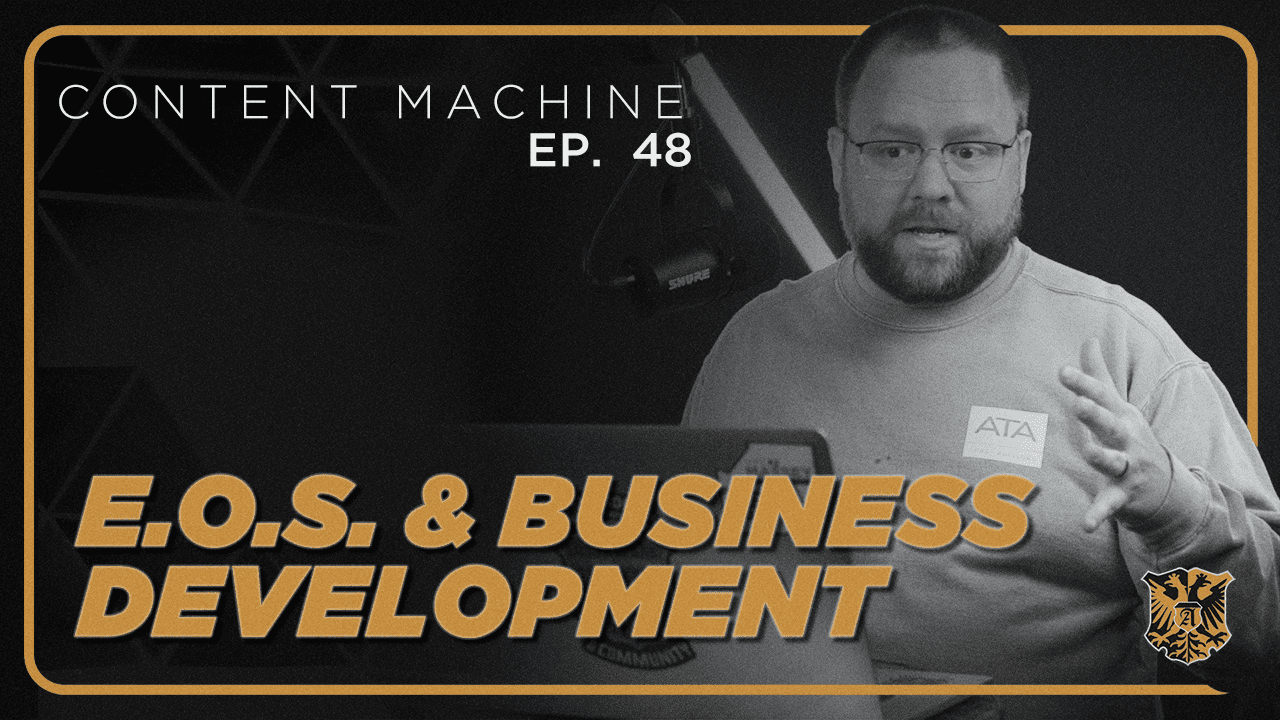
In fall of 2022, I began the work of implementing EOS as a structure for our business. Eos is the Entrepreneurial Operating System. It’s a framework for improving your business and getting work done on top of the chaos of client work that you might already be doing. I tell people all the time, it’s really easy to work in your business and not on your business. And as the leader of the business, my job is to work on the business and create a better future for my entire team. When we went to implement EOS, we already had a vision and mission statement, but we didn’t have core values. One of the things I had to develop was our core values, and that was something I initially drafted and got feedback from the team. We then developed those into talking points, and I got graphics designed around them. We work to talk about this every single week at our team meetings, although I’m not perfect at that, and it’s something I have to continue to work to integrate into our work culture. The second big change this has brought to us was a restructuring of our meetings. Typically, we have two meetings per week, the first meeting being a staff meeting, and the second meeting is what we call our catch-up call.
Eos and the demands of EOS meetings caused us to change some of the content of those meetings to be more structured around the EOS model. While we don’t have a quote-unquote leadership team at the business of our size, everyone is involved on the EOS team because the size of our team, which changes some of the dynamics of the book. During our staff meeting, our weekly longer meeting, we review all of our projects. That is something we’ve always done. But in addition to that, we’ve started sharing our scorecard and reviewing issues and reviewing our rocks for the quarter. Our scorecard is an enormous tool for transparency in our company. We choose to go over revenue numbers. We talk about utilization rates, which is an important number in our industry. We talk about the leads that have come in and when we’re having the leads come in that we need. We also have things that are holding me accountable as well, like how many networking events I’ve attended. The transparency that we have brought, I think, and based on feedback from the team, has increased the feeling of ownership from team members that they have in the organization.
Anytime leadership is silent on a matter, people will fill that void with their own narratives, which may be based on fact, or it may not be. I do it, and our team will probably do it. Everybody does that. So it behooves leadership to fill those silences and to speak on important matters. We’ve had a few months this year where we’ve lost some clients or clients haven’t paid on time, and so our revenue numbers have not looked as good as I would like to them to have been. And that affects some of the internal culture things that we do, like profit sharing and fun things. But instead of the team just knowing that those things didn’t happen, they have a much better understanding of what’s going on and what’s affecting those numbers than they did in the past. The understanding that has been brought from that transparency has relieved some of the burden on me for those roles, but also, I think it helps the team feel better about where we are as a company. Another component that has been really helpful for us in this first year of EOS is implementing the People Analyzer. The People Analyzer is a tool that EOS implements for you to review with all of your employees, and it starts with three questions.
Does the person get it? Do they understand the culture here? Do they understand what it means to work here? Do they want it? Do they show the drive to get the work done? Do they show drive to grow? Do they show drive at all? And do they have the capacity to do it? Are they capable of doing the work or capable of learning how to do the work? And then following up on that, you get a plus or minus rating for each of the core values of the company. Has this person demonstrated the core values in the last quarter or have they not? Each quarter, we go through those questions together, one on one with a staff member. In fact, we even do it with our interns near the end of their time as interns so that they can experience what an evaluation is like. During these sessions, I’ve had our staff grade themselves before they come to see me, and it’s been a growing tool for me to see where my team feels strong and where my team feels weak and what I can do to adjust that and help them to be successful.
The final big component of EOS was defining one-year goals that fit into our 10 year goal. We broke those out into 90-day increments, and through the first half of the year, we’ve done a great job of hitting those. We’ve hit some snags in the third quarter goals, and they’re bleeding into our fourth quarter, which is not great. But we have some goal, we have accountability structure around it, and it allows our team to make progress on things that we wouldn’t likely have made progress on in other ways. We’ve had goals in previous years that through lack of leadership on my end, we have failed to maintain and implement over time. This structure that EOS brings to the table is a stronger set up for success. The shared accountability, the shared weekly structure, it allows it to not be ignored or swept under the rug in ways that other things could have been. So as we complete our first year, we’ll be pushing to accomplish a few things, and I will be setting up our themes for next year and working with the team to pick out rocks and figuring out how they fit into our work for next year.
I would highly recommend Traction and the EOS system to anyone who runs a small business or a small organization, or a big organization for that matter, if you’re interested in getting better instead of doing the same old thing. Have you implemented EOS? I’d love to hear from you and compare notes. Honestly, there’s a lot of things that we could do better with it, but I’d love to hear about your experiences with the EOS. Thank you for listening to the Content Machine Podcast, and we look forward to catching you on an episode in the near future.

